

Damion Smy
Ford Everest Tremor gets 260kW V6 ‘Ranger Raptor’ treatment
17 Hours Ago
It’s the Porsche that feels slightly more perfected and more confidence inspiring over Aston's DBX707 and Lambo's Urus Performante
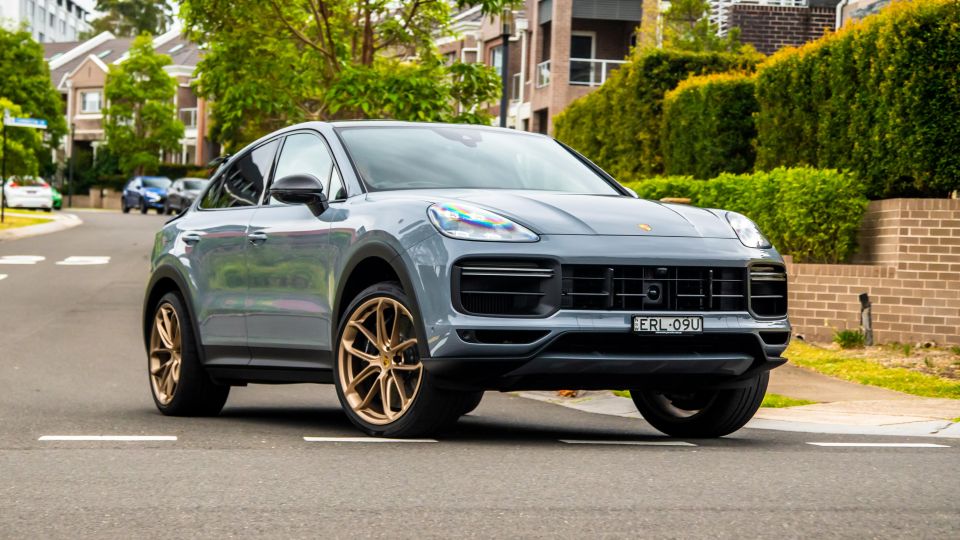
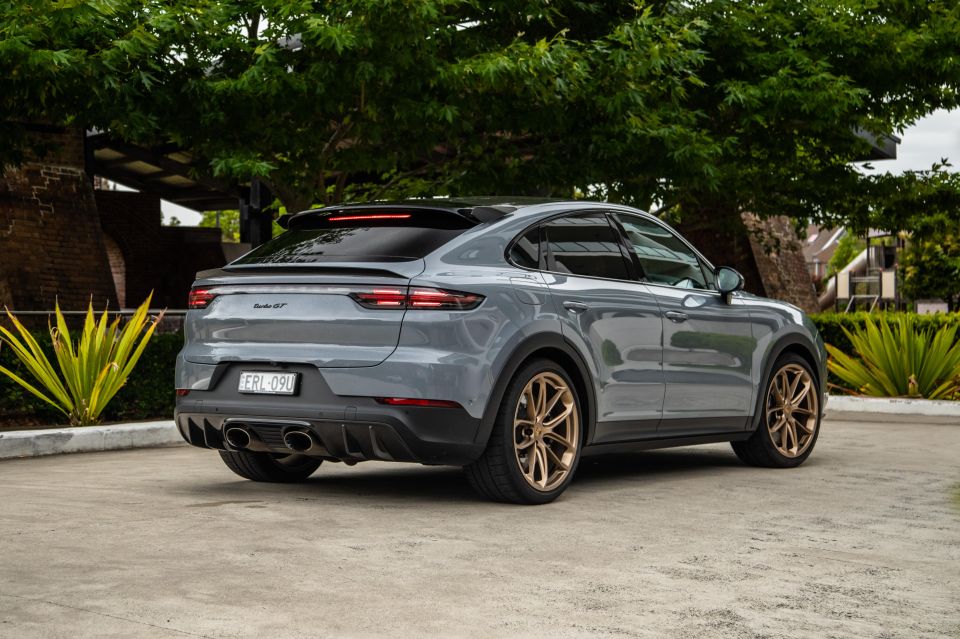

Quickly see how this car stacks up against its competition. Select any benchmark to see more details.
Where expert car reviews meet expert car buying – CarExpert gives you trusted advice, personalised service and real savings on your next new car.
The Porsche Cayenne Turbo GT is probably my least favourite hi-po SUV to look at, at least from front-on, but that doesn’t mean it isn’t any good – quite the opposite in fact.

The last thing I want to do here is sound like I’ve been gulping down litres of Porsche-branded Kool-Aid, but I can tell you unequivocally, this high-rider from Stuttgart is not only the most capable SUV I’ve ever driven, it’s also one of the most intoxicating. Addictive, even.
And that’s in the presence of Aston Martin’s truly sensational DBX707 and Lamborghini’s outrageously track-worthy Urus Performante, both of which I’ve clocked up some serious seat time – on road and track, as it happens.
Some might argue the Lambo and Aston are more exotic machines that occupy a more rarefied position in the luxury space than any Porsche SUV, but then this is no ordinary Porsche Cayenne Turbo either. Every major (and minor) component has been honed to the nth degree for a level of performance that rivals will find hard to beat.
That’s the engine, gearbox, exhaust, brakes, chassis and even the wheels have all been reworked for maximum performance, yet remarkably at no cost to comfort or daily driveability. This folks is the GT3 of SUVs, full stop. It’s also a bit of a sleeper.
But while it might fall short in the cachet department, with those buyers more interested in the badge on the bonnet than bespoke engineering know-how; let me assure you, the Cayenne Turbo GT should be feared by all other performance car manufacturers looking to best it. Though at this stage, I doubt that’s even possible.
For the Porsche Cayenne Turbo GT is currently the world’s fastest SUV around the famed Nürburgring Nordschleife where it lapped the 20.832km circuit in 7:38.9 minutes. Previously the record was held by close relative the Audi RSQ8, which clocked a 7:42 in 2020.
Granted, when you’re spending more than $350,000 on the family chariot, good looks and styling must surely factor large in the final purchase process, but then that’s not always the case with Porsche-branded models – especially the SUVs.
To that end, I find the front-end a bit boat-like and a tad too blunt-ended on the Cayenne, less so on the smaller Macan. It is, however, entirely functional as is the lowered stance – by 17mm compared with the Cayenne Turbo Coupe. That said, the darkened headlight covers are in keeping with its ballistic firepower and top-shelf status.
The large air intake grilles and even larger side cooling air intakes supply air to the prodigiously powerful twin-turbo V8, while the protruding lip spoiler puts downforce on the front axle to keep things in-check through high-speed turns.
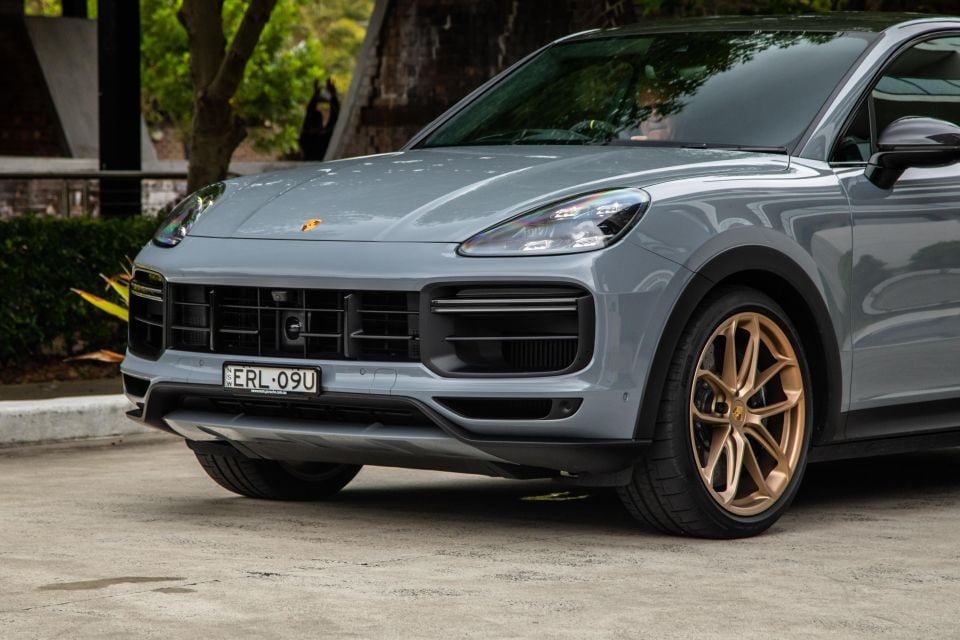
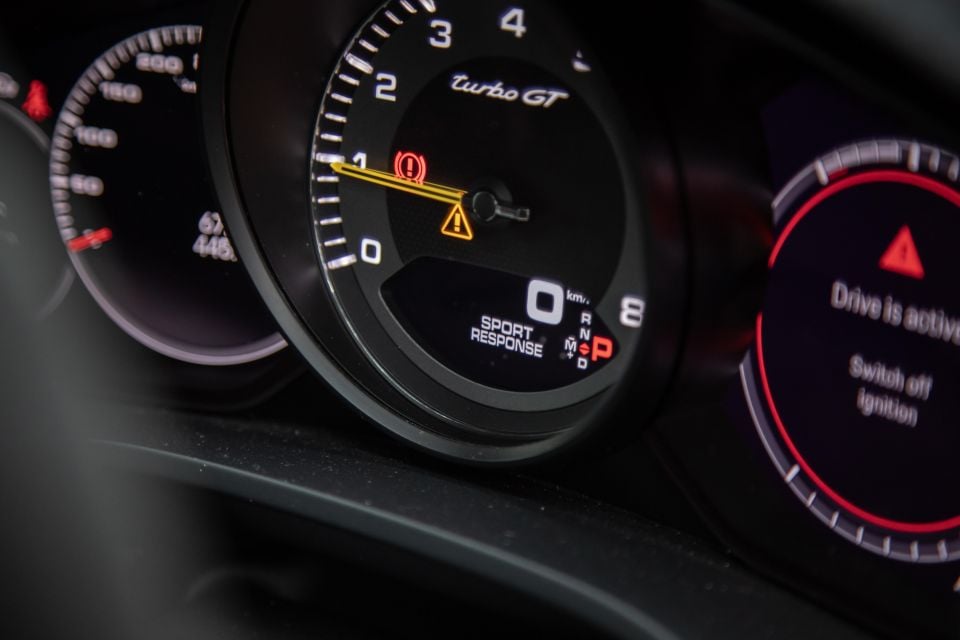
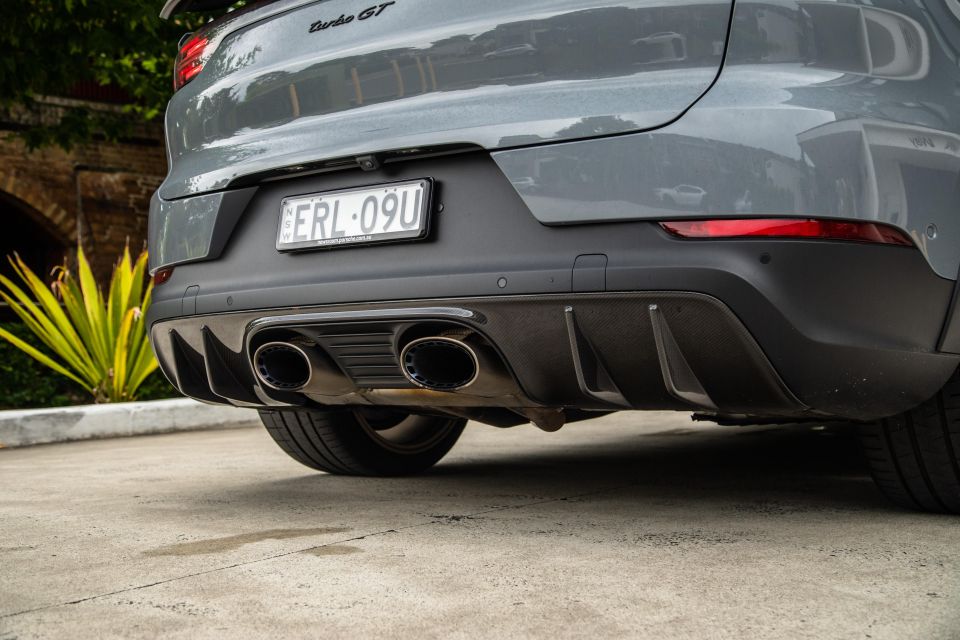
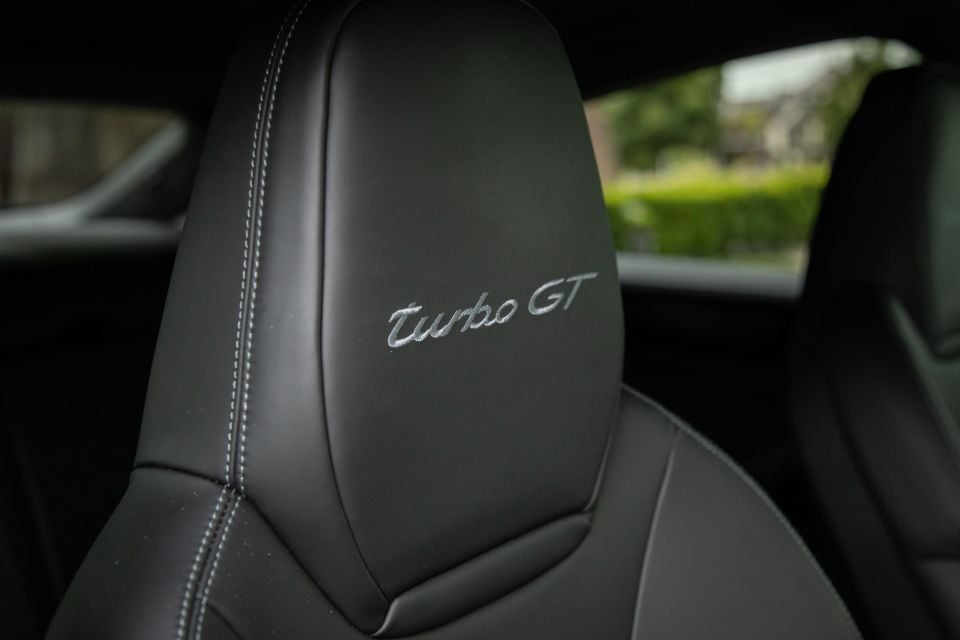
However, the rear styling is an entirely better view in my mind. It’s not just the black-script Turbo GT badge that should strike fear in the eyes of its competitors, it’s the two cannon-size central exhaust pipes (exclusive to the Turbo GT) that point to its unrivalled track-focused weaponry hidden beneath the Arctic Grey paint job and distinct gold-coloured (Satin Neodyme) 22-inch wheels on this tester.
Everywhere you look, there are tweaks to the exterior in the interests of weight reduction, improved aero or handling precision. Take the carbon-fibre roof that replaces the standard glass unit on the regular Cayenne Turbo; it saves 22kg at the car’s highest point that reduces both the centre of gravity and what little body roll there already is under load.
The active roof spoiler with carbon-fibre side-plates that look like those aero winglets on a 787 Dreamliner is double the size of that on the regular Cayenne Turbo, while generating no less than 40kg of downforce on the rear axle.
Further down is a non-cosmetic, four-ribbed carbon-fibre rear diffuser without the gloss finish but housing the GT3-style titanium exhaust system with its centrally-mounted pipes. A nice touch is when the exhaust tips shimmer blue once they’re hot enough.
There’s no one grand play or upgrade on the Cayenne Turbo GT that makes it so much better than the regular Turbo version. Rather, it’s myriad of tweaks and enhancements all working in perfect sync – and that includes the wheels, at least the fronts. They’re still 22-inches shod with P Zero Corsa tyres, but the fronts are an inch wider with significantly more negative camber for a bigger contact patch.
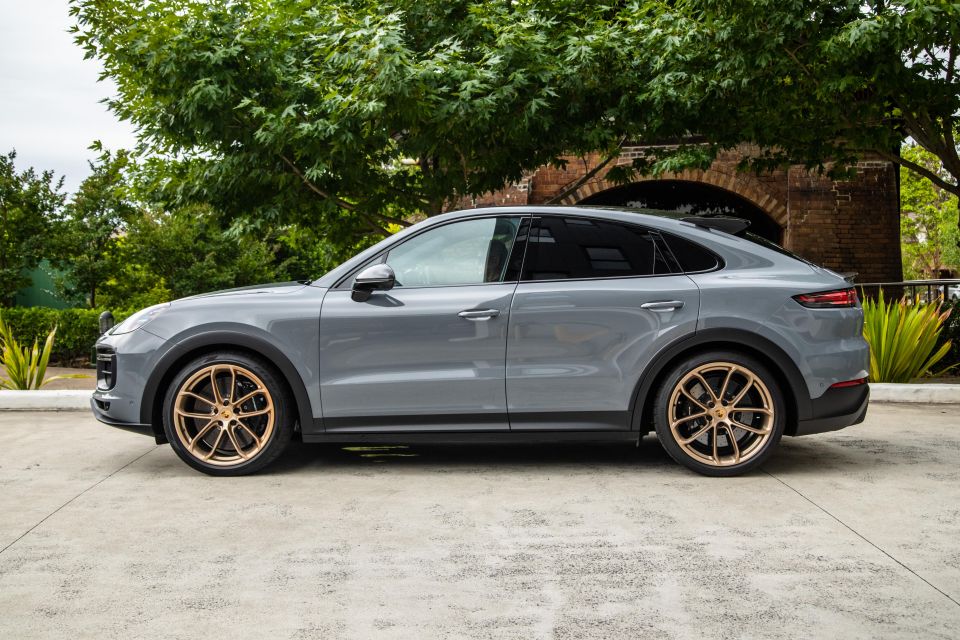
As if Porsche’s triple-chamber air suspension isn’t sufficient enough to handle the balance between the Cayenne Turbo GT’s ride and handling, but it too has gone under the microscope. The chassis engineers have dialled in 10 per cent more firmness in Normal and 15 per cent in Sport Plus mode.
The flow-on effect meant firmer damper settings up front as well as stiffer damper mounts on the rear axle for the sharpest turn-in in the business – at least for an SUV of these proportions.
Even the rear-wheel steering has been updated using a fully-variable differential lock for superior overall precision on turn in. It’s impossible to list every upgrade in the Cayenne Turbo GT as it would read more like compendium of chassis upgrades. It’s truly exhaustive and that’s not the half of it.
Engine and braking enhancements are just as meticulous and equally effective.
Not only does the Turbo GT use Porsche’s most potent V8 engine, but in the GT it delivers 16 per cent more punch than that in the standard Cayenne Turbo. It’s not just about turning up the boost pressure either, the turbos have larger compressor wheels for increased pre-loading for instant response in power and torque.
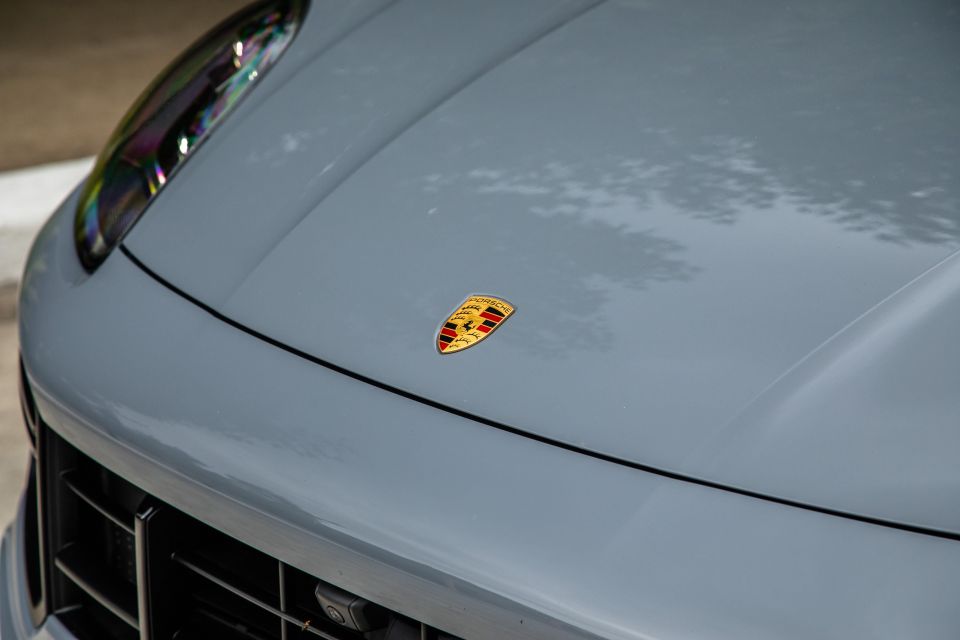
With greater power comes greater heat, necessitating the need for additional cooling. No problem, Porsche has given the Turbo GT three more radiators and bigger air/water intercoolers to manage it.
Then there’s the engine itself – the key components of which have been enhanced to handle no-holds-barred track work. Things like the crankshaft, connecting rods, pistons, timing chain drive and torsion vibration dampers are all geared to handle higher loads.
Rather than Porsche’s trademark PDK dual-clutch transmission, the Cayenne uses an eight-speed auto; only in the Turbo GT the gear changes happen quicker and louder, thanks to a gearbox cooling system unique to this model.
We could go on, and on.
Priced from $351,900 before on-road costs, the Cayenne Turbo GT commands a significant premium over the next rung down on the Cayenne model ladder – the Cayenne Turbo S e-Hybrid Coupe at $311,100 excluding on-roads.
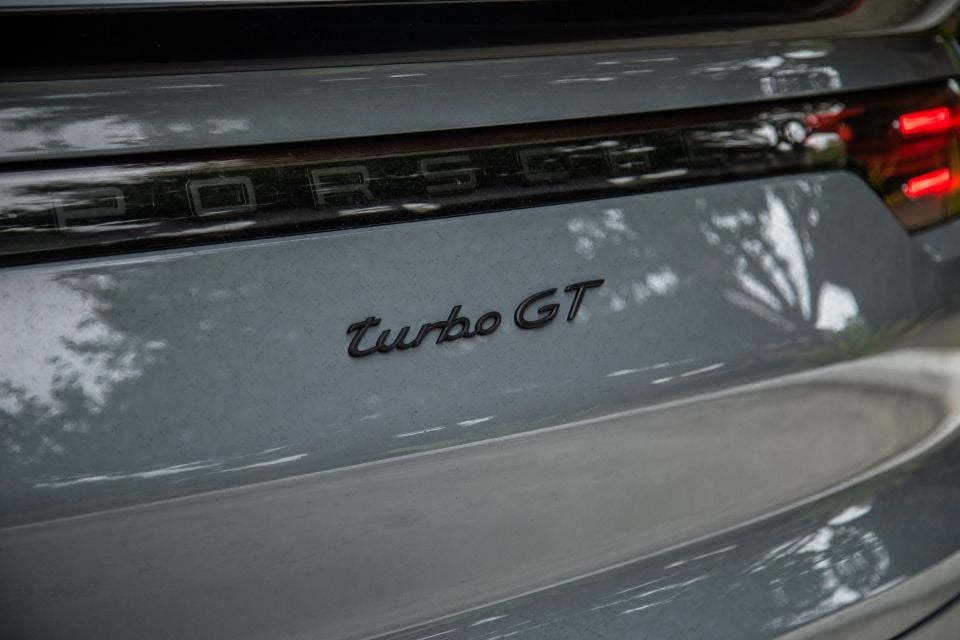
Nevertheless, the Porsche represents something of a bargain against super-SUV rivals like the Aston Martin DBX707 ($428,400) and Lamborghini Urus Performante ($465,876).
There’s also the Bentley Bentayga Speed ($514,200), but it’s got a W12 under the bonnet – hence its stratospheric asking price.
Ferrari is also gearing up for its launch later this month of its first ever high-riding utility model called the Purosangue, which uses a naturally-aspirated V12 with a reputed asking price of a staggering $1 million on-road. Production of the new Ferrari is also said to be sold out for the first three years.
Buy your new car without the stress. It's fast, simple and completely free.

Great service from Travis and team, second time I have used this business would not hesitate to recommend them to anyone
Craig C.
Purchased a Ford Ranger in Sunshine Coast, QLD
CarExpert helped Craig save thousands on his Ford Ranger, now let us save you on your next new car.
Find a dealYou know you’re in something special thanks to almost every visible surface being wrapped in extra-soft Alcantara – from the sports seats to shifter and almost everything inbetween.
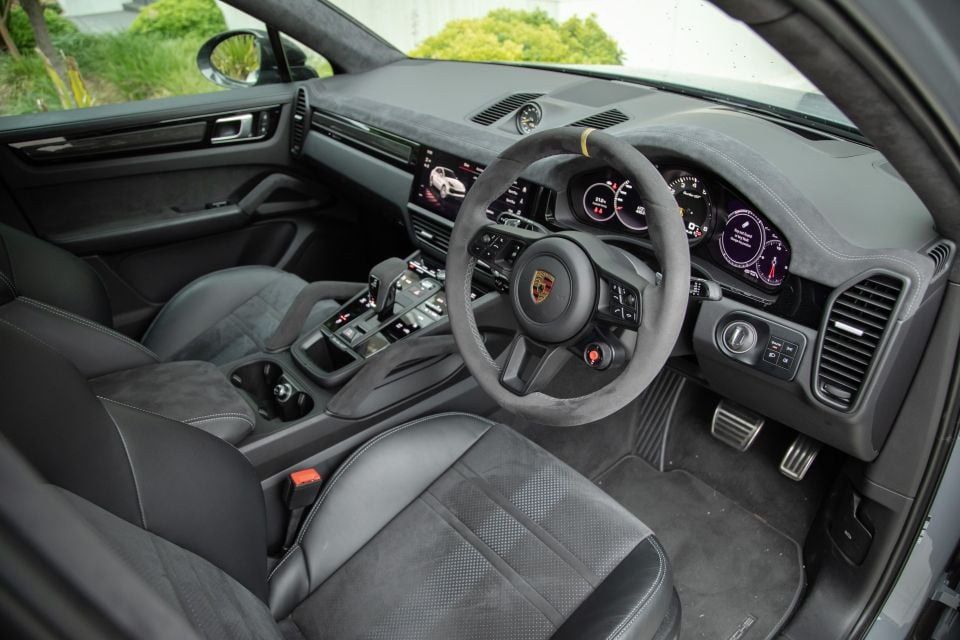
It’s not overtly luxurious like the Aston Martin DBX707 or bespoke like a Bentley Bentayga with its shiny, jewel-like switchgear and exquisite knurled knobs, but it’s every bit as comfortable no matter what speed you’re doing or what the road surface is like.
Inside our Cayenne Turbo GT tester was pretty much an all-grey affair which worked well enough with its extra-special Arctic Grey paint job, but I’ll like to see a splash of a more vibrant Porsche colour like Lava Orange, Python Green or even Racing Yellow to match the 12 O’clock marker on the steering wheel and Sport Chrono needle – after all, it is a Porsche GT model, right?
There’s not a lot of bright work either, bar the pedals, door handles and some surprisingly nice knurled rocker switches but then that’s not really the focus of the Cayenne Turbo GT – the emphasis is on straight-up pace and dynamic handling, which is the why these sports seats are some of the best in the business.
The Alcantara cushioning stops any sliding around even under big lateral G-forces, while the bolsters (not overly aggressive) allow you to squeeze on more throttle when most other SUVs would need the brakes applied at this point.
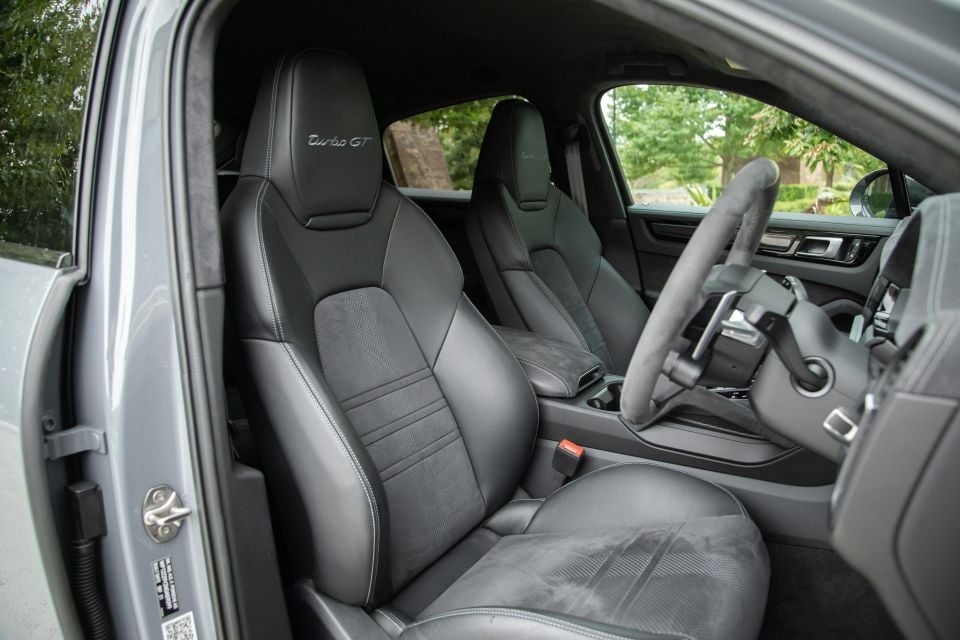
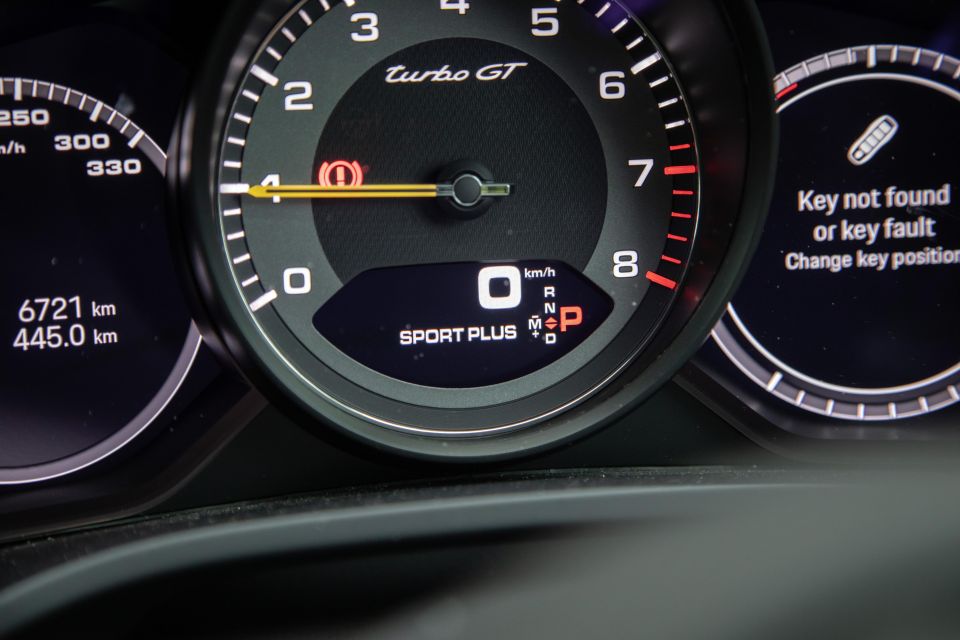
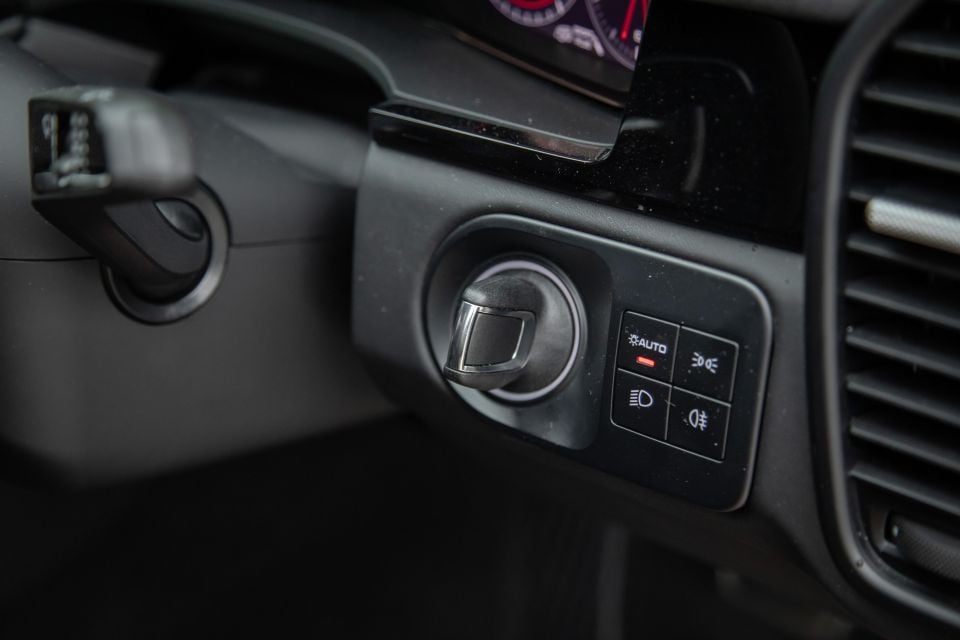
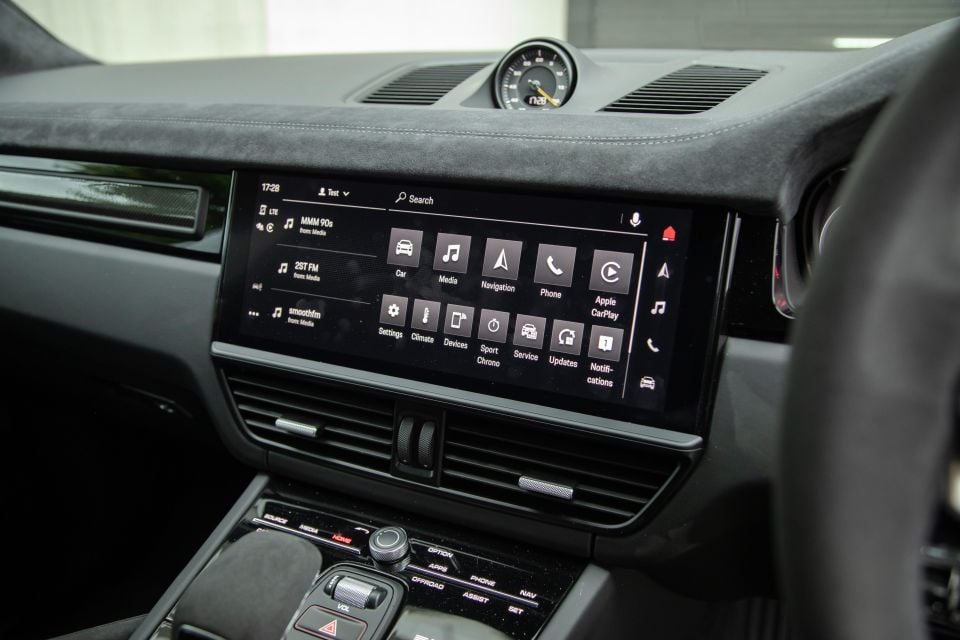
There’s a perfectly round Alcantara steering wheel that’s beautifully sized and contoured for grip as well as the volumes of feedback you get from the Turbo GT.
Porsche do steering wheels better than almost all rivals with a convenient drive mode rotary dial and a couple of easy-to-use roller switches for audio and driver’s display functions. It’s simple, intuitive and effective for quick changes on the go.
The centre-console doesn’t quite match the 911’s slick screen layout but it’s all nicely integrated while the tech itself is via PCM 6.0 and just as contemporary and smartly integrated. There’s also several knurled dials and rocker switches for easy volume and climate control adjustment but otherwise there’s a bunch of haptic feedback and shortcut buttons for quick access.
There’s also a proper old-school shift lever as well as real-metal paddle-shifters for when conditions are right for some rapid-fire manual gear shifts.
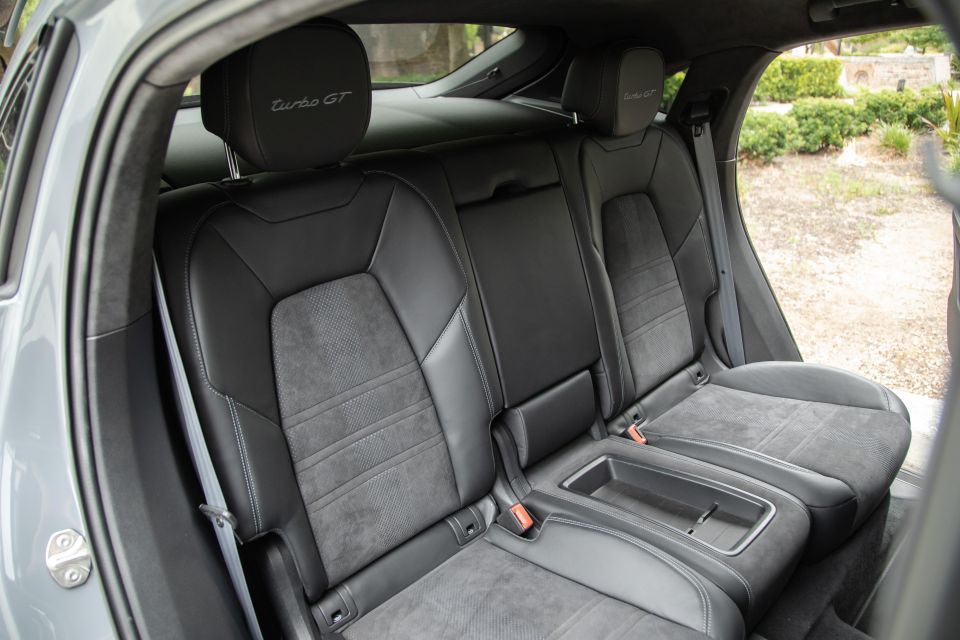

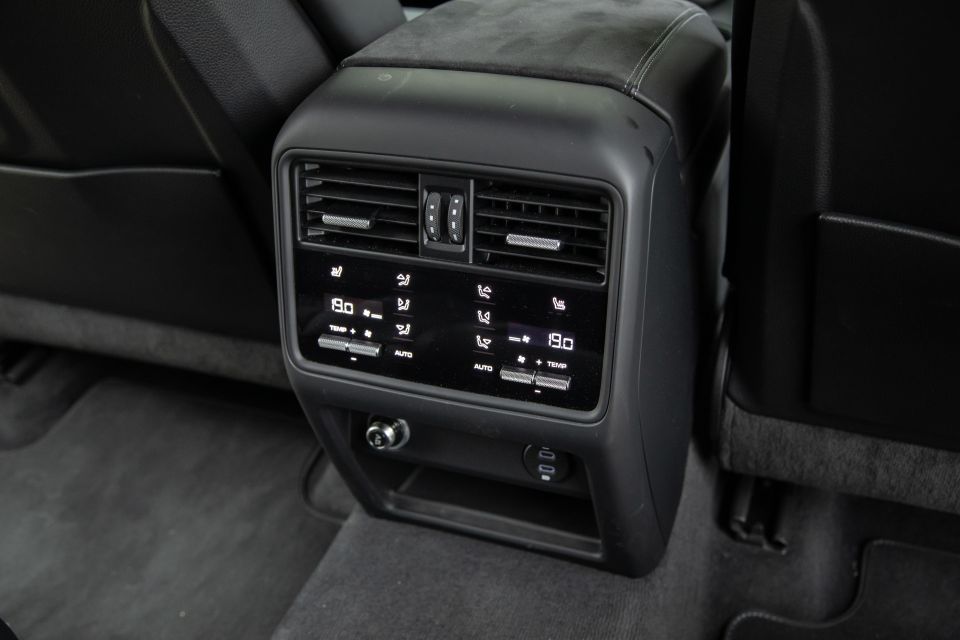
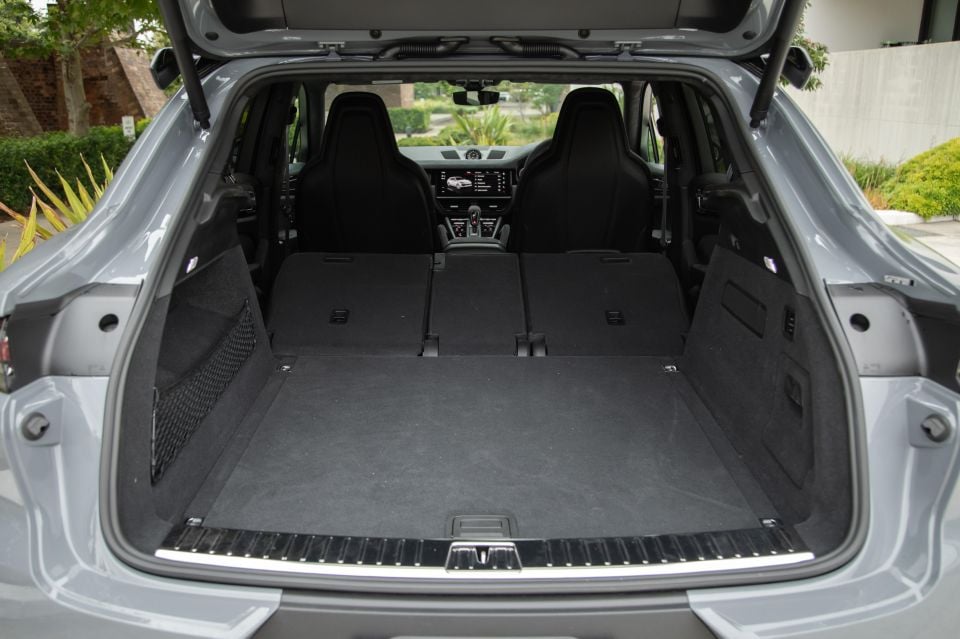
First row storage space is a little on the scarce side, with only a couple of small receptacles for a single phone keys. However, there are a couple of cupholders and a decent-size console bin for larger items such as sunnies and wallets.
Out back in the second row the swathes of Alcantara upholstery continues unabated, although, the Cayenne Turbo GT is a strictly a four seater but will generous leg and headroom for all passengers – front and rear.
Luggage space is 549 litres in the Turbo GT with rear seats up, compared with up to 625 litres in the base Cayenne. It’s a similar story when you lower the second-row which opens up 1464 litres, as opposed to 1540 litres on the entry model.
Porsche has dropped its most powerful V8 motor into its flagship SUV and while it might be the same displacement twin-turbo engine from the Cayenne Turbo, Porsche has carried out a multitude of performance upgrades designed to deliver more grunt more immediately, but not at the expense of daily driveability.
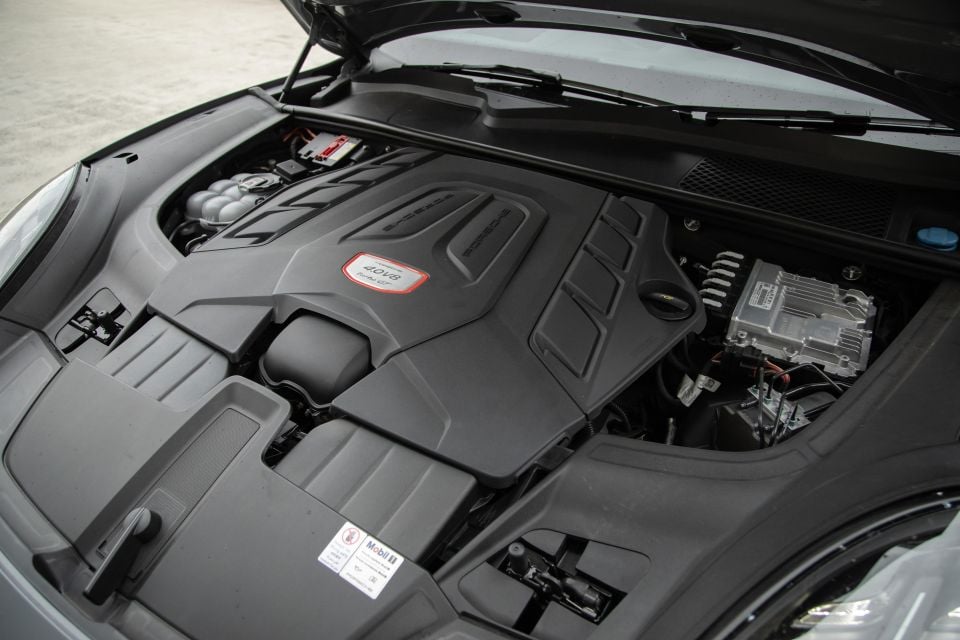
Those extensive engine modifications have helped boost max power by 67kW to 471kW at 6000rpm, while torque swells by 80Nm to 850Nm from 2300-4500rpm.
Not only can the Turbo GT go from zero to 100km/h in 3.3 seconds (0.6s less), but top speed is also bumped to 300km/h (up by 14km).
Engine internals have been uprated for handle higher loads on track, specifically. For example, the crankshaft, connecting rods, pistons, timing chain drive and torsion vibration dampers are all designed to handle more extreme loads.
Additionally, the fuel injectors have been changed for high-flow units that deliver a flow rate 10 per cent higher, which in turn delivers more power and torque.
Not only do the turbochargers use larger compressor wheels that generate more boost pressure (up to 1.6 bar), turbocharger pre-loading has also been increased. Combined they deliver better throttle response – something you’ll feel from the very first time you punch it.
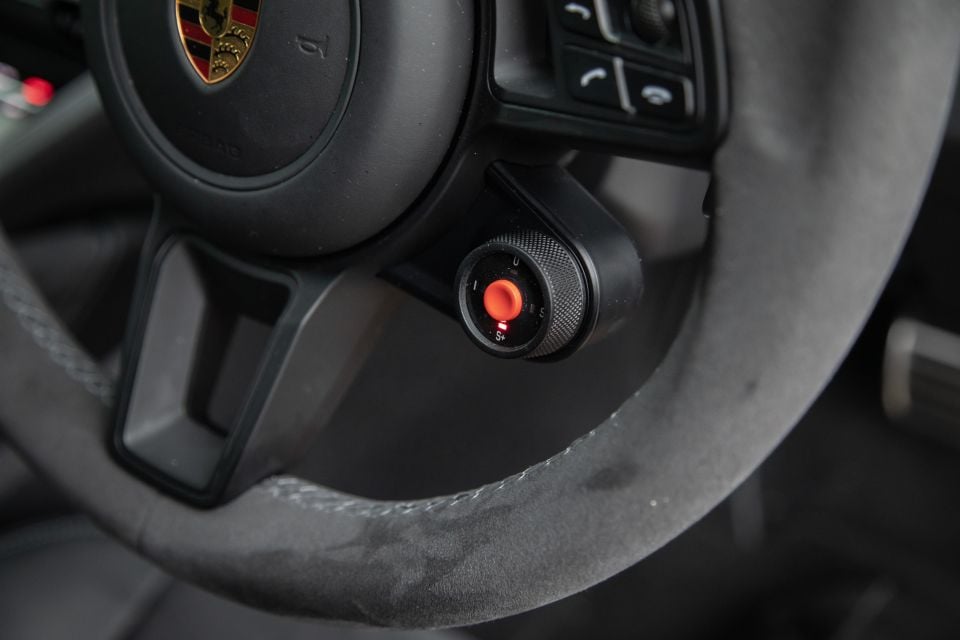
With more power comes more heat, so Porsche has added no less than three additional radiators to what was already an extensive cooling system in the Cayenne Turbo. Again, it all points to the extra loads during track use.
Although the engine is mated to the same eight-speed auto transmission used across the Cayenne line-up, but in the Turbo GT things happen faster and with a lot more acoustic effect.
The Porsche Cayenne Turbo GT has a 90-litre fuel tank and requires premium fuel, with an average combined fuel consumption of 12.6L/100km.
There’s something satisfyingly therapeutic about turning the permanently-placed key in a Porsche. There’s something utterly natural and intuitive about it as opposed to simply pushing a button.
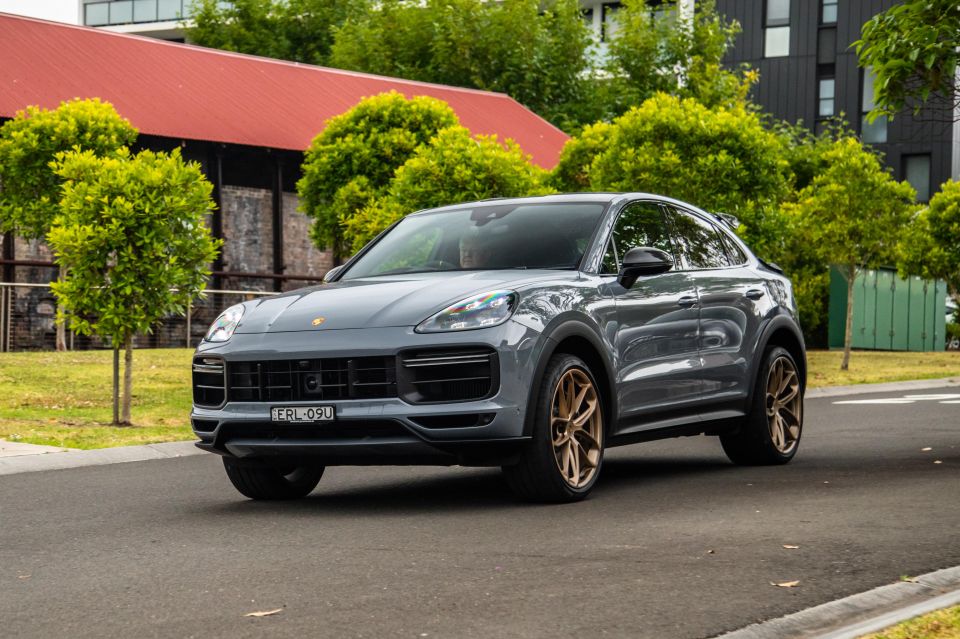
It’s especially satisfying in the Cayenne Turbo GT, or in any Porsche GT-badged car for that matter. Not only because you and every other driver nearby knows it’s a GT car and therefore a special breed, but because the start-up bark is properly race-bred and singularly purposeful thanks to its less-restricted and decibel-boosting titanium exhaust system.
The other tell-tale sign are the two oval-shaped exhaust tips themselves, centrally located and a true trademark signature of Porsche’s scintillating GT models.
Kicking off in Normal mode there’s already a genuine eagerness with this engine to get going. It’s not nervous, but throttle sensitivity is still wonderfully sharp and beautifully calibrated as far as pedal feel goes.
Better still, the gearshifts happen noticeably quicker than you might expect of this drive mode, but still with a sharply orchestrated crackle or two on the overrun. Half of me thinks there’s no real need to dial up Sport, but that sentiment doesn’t last long.

Engine response dials up a level or two and shifts are noticeably shorter, and the exhaust is a lot sharper to boot in the Sport setting. I’m still in auto and letting the quick-shifting gearbox do its thing – perfectly, every time – especially on the throttle-blipping downshifts.
Half of me thinks it’s a PDK in character, but even though the cog swaps are rifle-fast at times, they’re also smooth and refined, until you turn the dial clockwise one more time to Sport+, and then all hell breaks loose and you feel like you’re behind the wheel of a 911 Dakar.
It’s not just the lag-free throttle response and race-like exhaust notes that will have you hooked; it’s as much the ultra-sharp turn in and complete elimination of any lateral lean as you navigate the local roundabouts as if they were the Ford Chicane at Le Mans.
To be perfectly honest, turn-in feels just as quick as in my own 991 Carrera S, but with more steering feel and a tighter ratio – at least that’s what it feels like from behind the wheel.

Where expert car reviews meet expert car buying – CarExpert gives you trusted advice, personalised service and real savings on your next new car.
But here’s the thing. Even though the triple-chamber air suspension is firmer in all three drive modes in the Turbo GT, there’s still sufficient levels of damping available to absorb the sharper suspension hits and bumps no matter what kind of pace you’re setting – and that’s on Sydney’s atrociously maintained roads.
Like most other Porsches I’ve driven, it’s the artful calibration all the major mechanical and electrically-actuated systems working as one beautifully-synced system that makes the Porsche Cayenne Turbo GT one of the best hi-performance SUVs ever. If not the most complete.
Grip levels too, are off the charts to the point where you just want to get the thing on track and see what the Cayenne Turbo GT is truly capable of. At this point there are no obvious flaws and trust me, I’ve been trying to come up with a few.
The sheer footprint is huge, as the trifecta of extra-wide and sticky low-profile 315/30 section Pirelli P Zero Corsa tyres at the rear, all-wheel drive and all-wheel steering – all of which are working in concert to keep the big Porsche thoroughly planted but still with a rear-wheel bias at times as you squeeze on the power on corner exits.
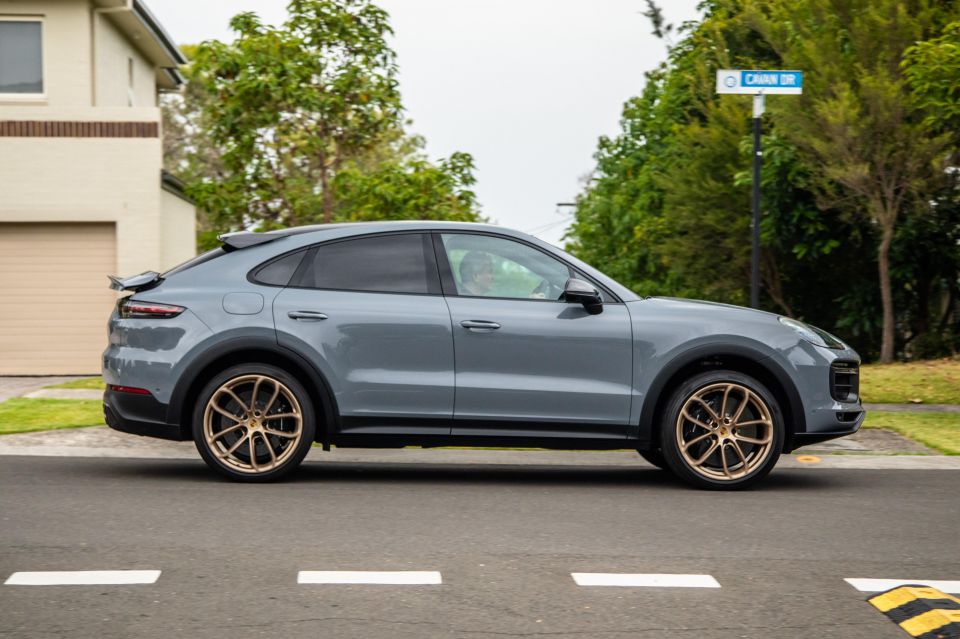
And never mind the stopping power. Let me remind you of the massive 440mm carbon-ceramic discs up front with huge 10-piston calipers applying stupendous levels of braking – from whatever speed you may be pulling.
What’s more, pedal feel is decidedly more natural than you find with rival makes and models. It really is a wonderfully exciting SUV and one of the least intimidating.
For those wanting to make use of Cayenne’s hauling capacity, it has a 3500kg braked towing capacity in its rarefied segment.
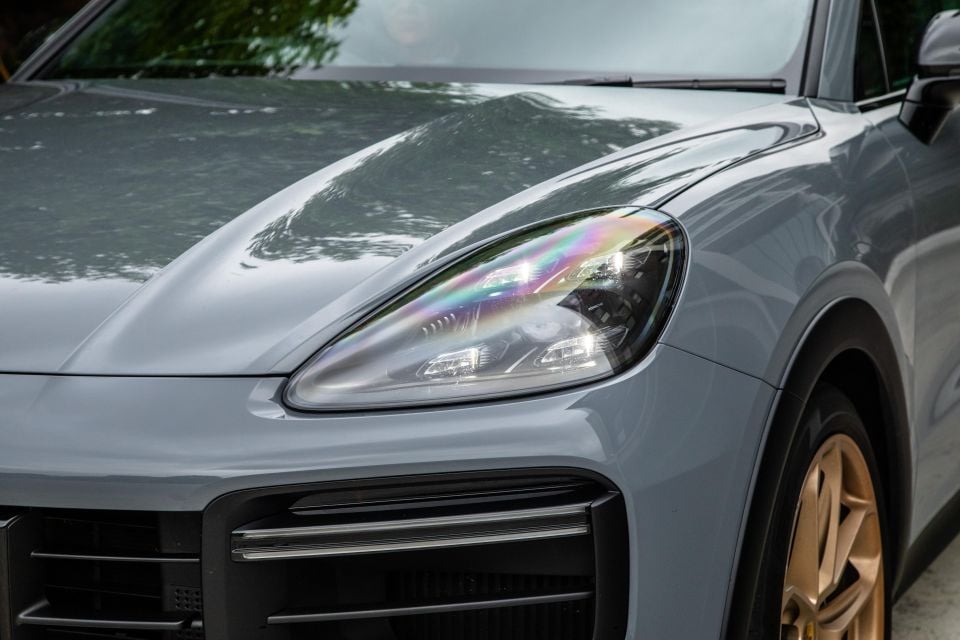


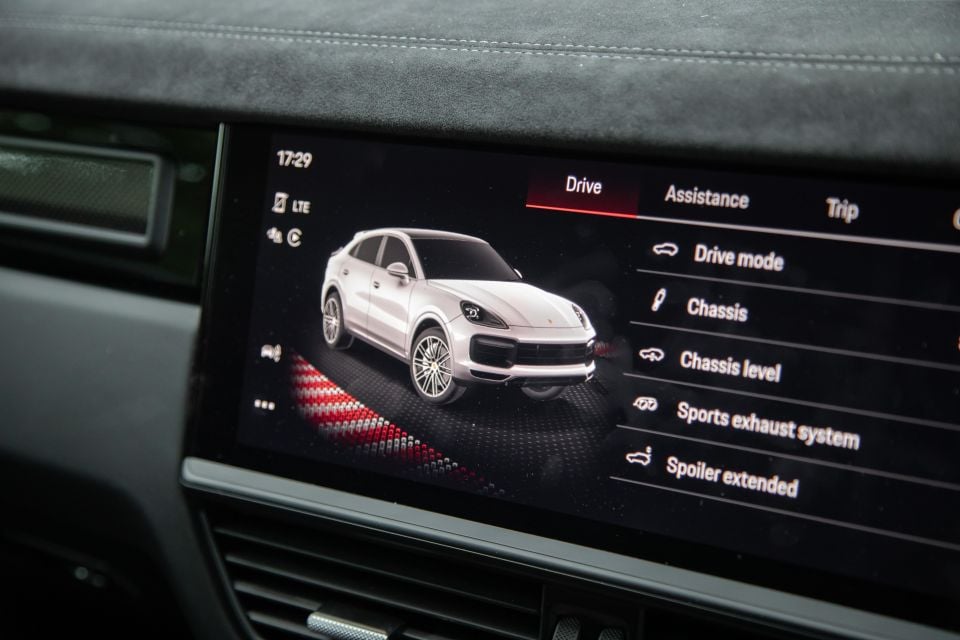
Cayenne Turbo GT highlights:
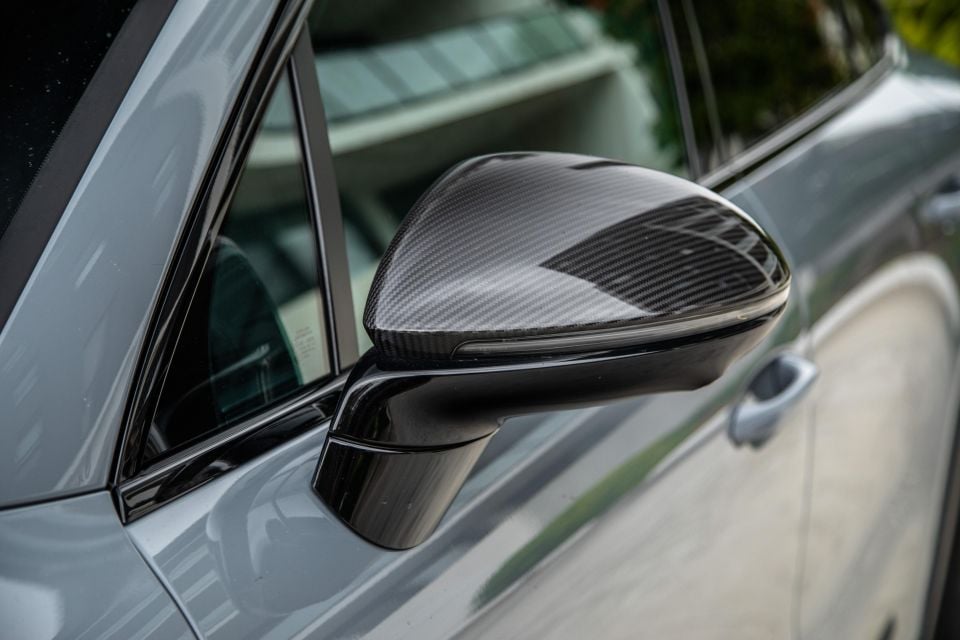
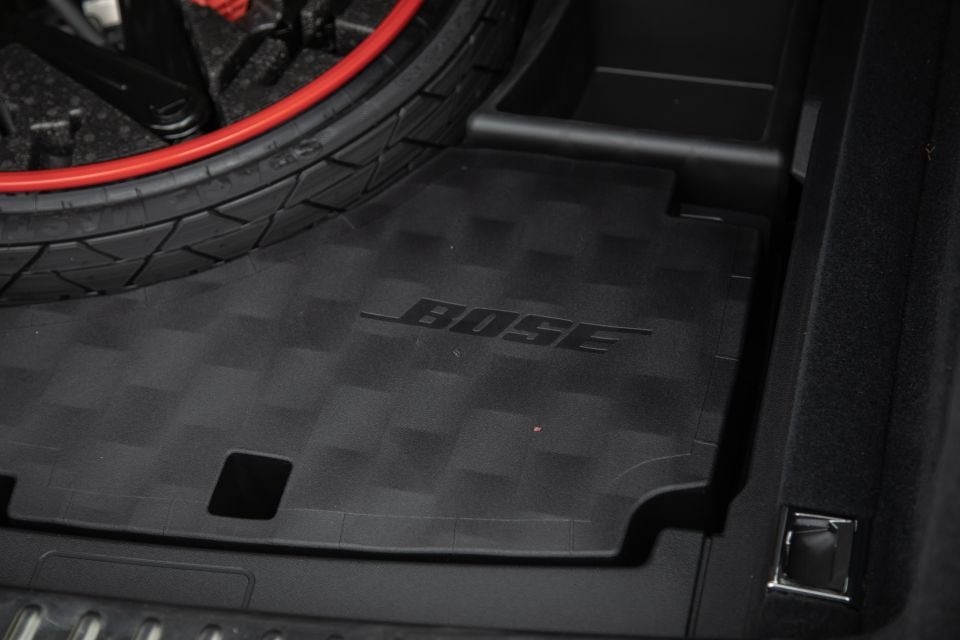
Options (as tested):
Total cost of our Cayenne Turbo GT tester with options: $364,530 plus on-road costs.
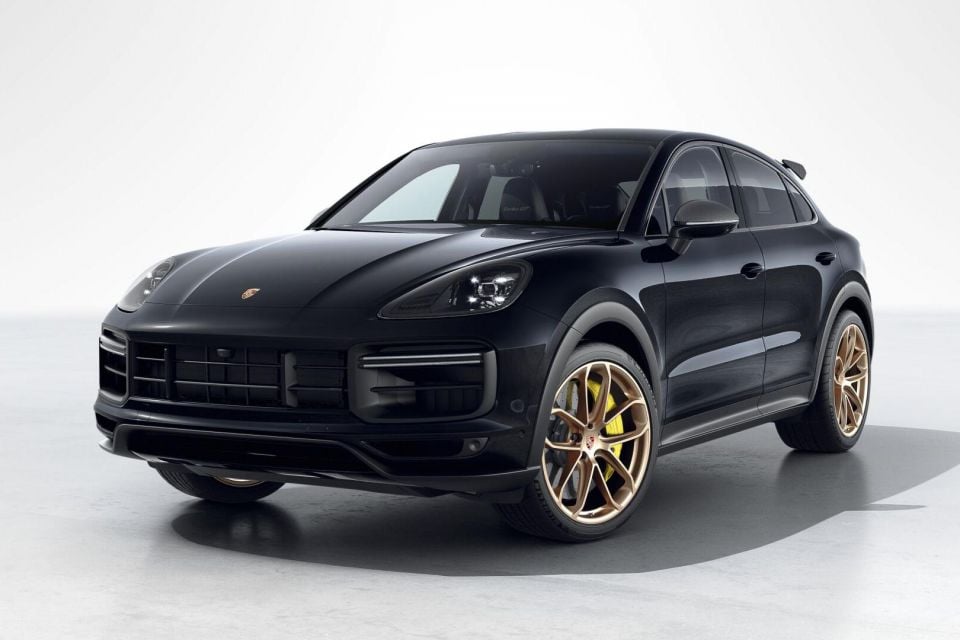
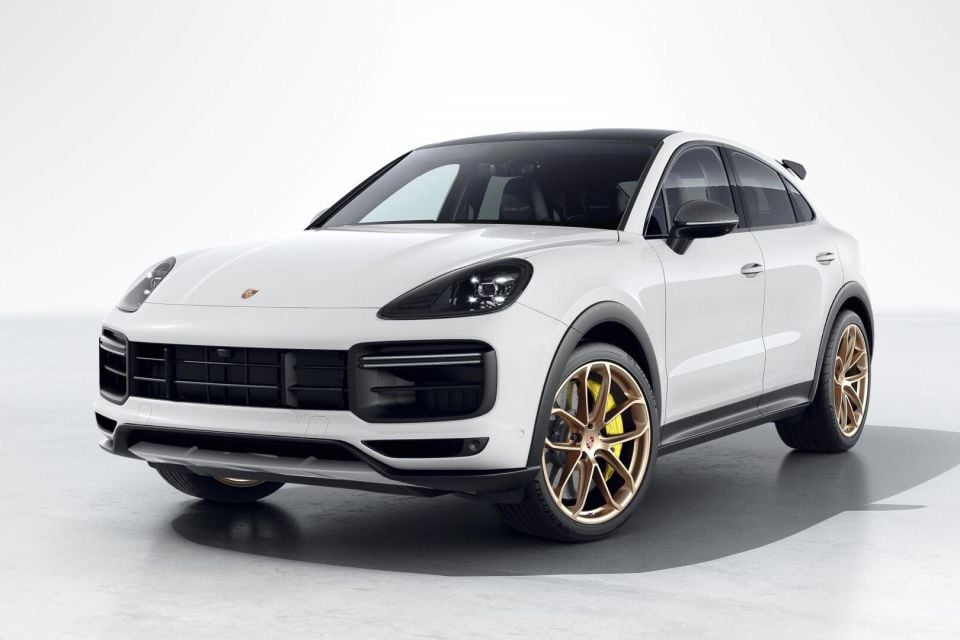
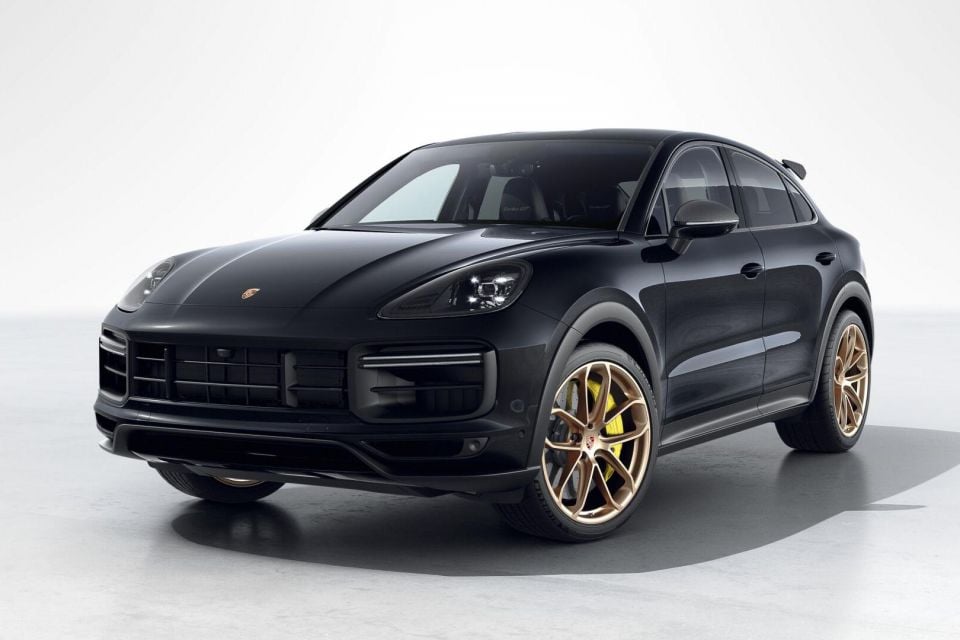

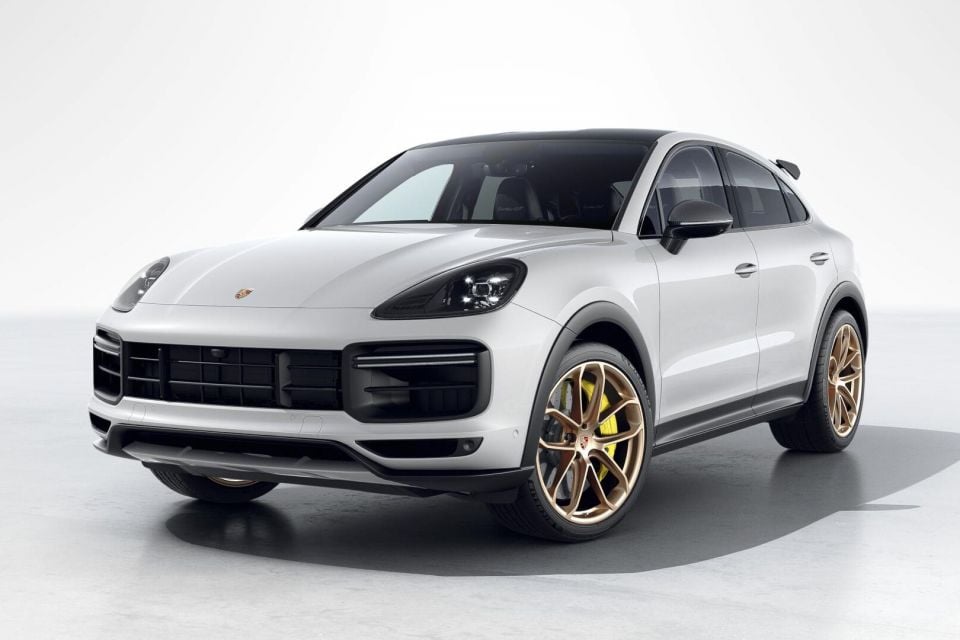
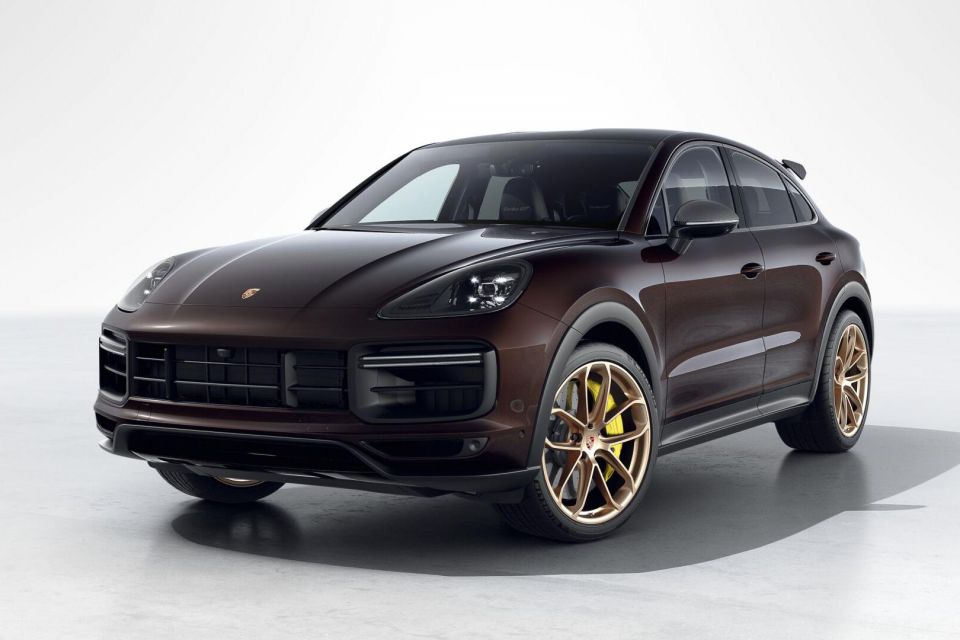
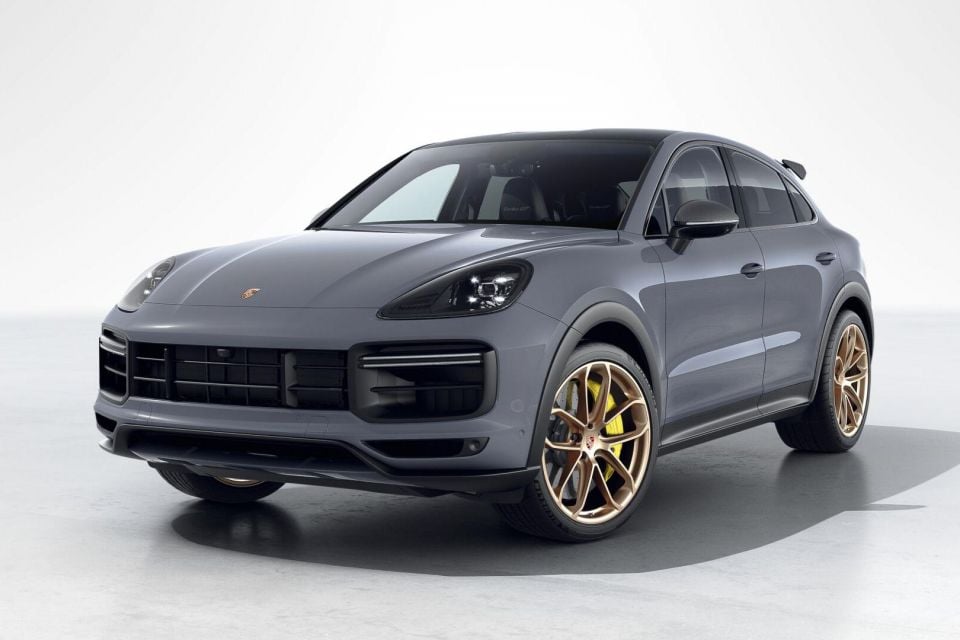
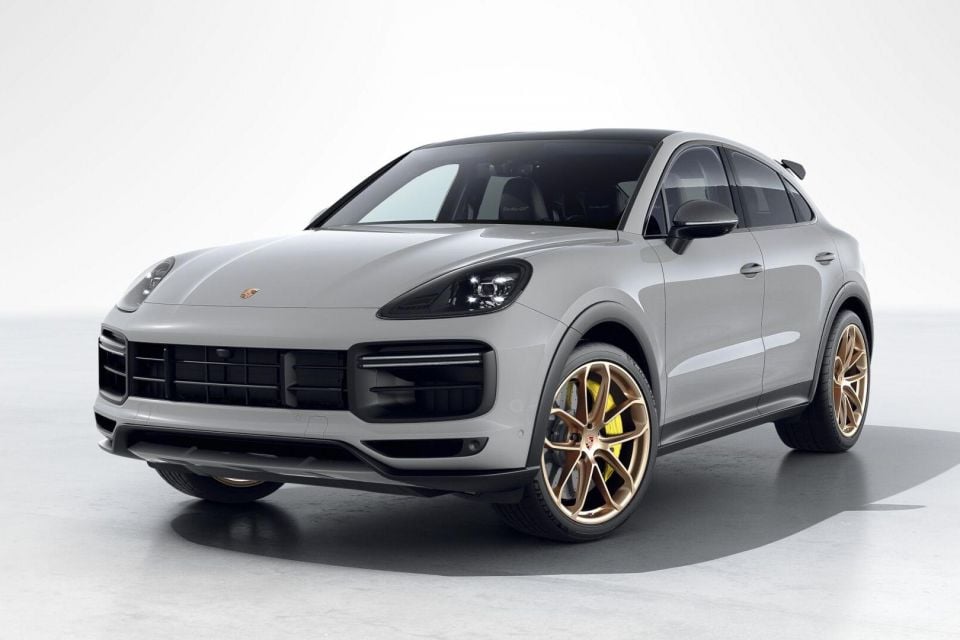
Customers can also choose between 50 different shades offered by Porsche Exclusive Manufaktur, which also includes historic Porsche colours.
The Cayenne received a five-star Euro NCAP safety rating in 2017, covering all model variants. However, ANCAP still doesn’t have a safety rating for the large Porsche SUV.

The Cayenne scored 95 per cent in adult occupant safety, 80 per cent in child occupant safety, 73 per cent for pedestrian safety and 62 per cent for safety assist.
Standard safety features include:
Available options include a semi-autonomous Active Lane Keeping system (adaptive cruise + lane centring) as well as Active Parking Support which can semi-autonomously park your Cayenne.
Other optional assistance systems include rear cross-traffic alert, Exit Warning, and a 3D Surround View feature for the 360-degree camera system.
Porsche offers a three-year, 200,000 kilometre warranty on the Cayenne Turbo GT with three years roadside assist.
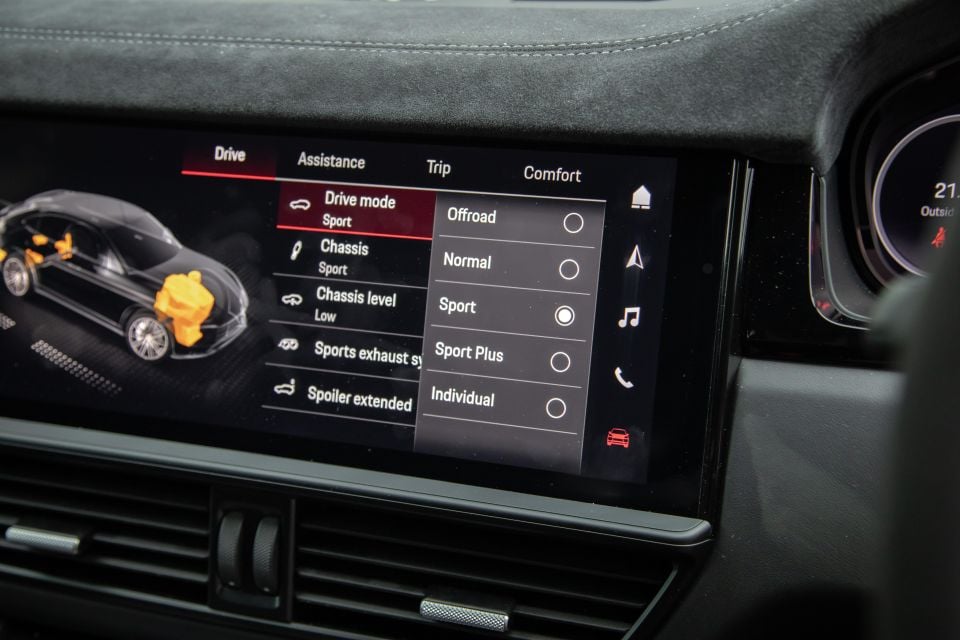
Service intervals are one-year/15,000km (whichever comes first).
Porsche doesn’t quote service costs due to varying labour rates from state-to-state, so best to visit your nearest Porsche centre for an accurate quote.
It may not be the most aesthetically pleasing of the small group super-fast SUVs on the market, but if you want the sharpest and most thoroughly dynamic high-rider on the planet then you’ll want the Porsche Cayenne Turbo GT.
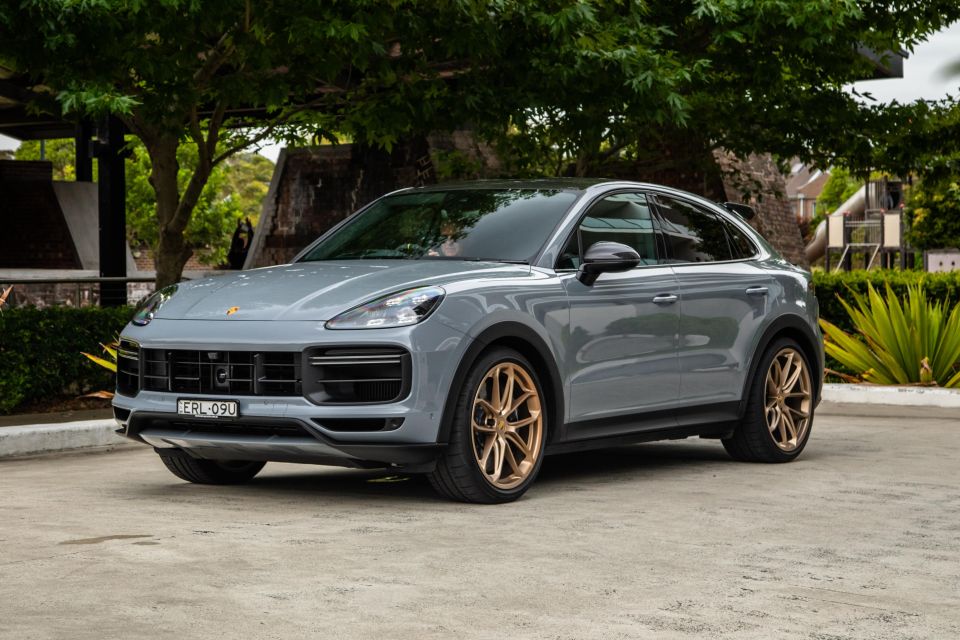
Don’t get me wrong, there’s very little in it; between this, Aston Martin’s DBX707 and Lamborghini’s Urus Performante – both of which are outrageously capable – it’s the Porsche that feels slightly more perfected and more confidence inspiring when pushed.
For those with the coin it will likely come down to brand and badge over dollars alone. Nevertheless, the Cayenne GT is also a veritable bargain in this company.
Click the images for the full gallery
Where expert car reviews meet expert car buying – CarExpert gives you trusted advice, personalised service and real savings on your next new car.
Anthony Crawford is a CarExpert co-founder and senior presenter with 20+years in automotive journalism and content creation.


Damion Smy
17 Hours Ago


Derek Fung
22 Hours Ago


Ben Zachariah
4 Days Ago
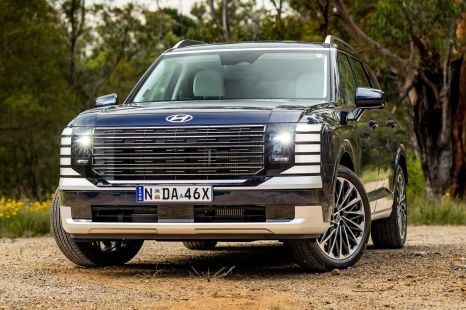

Matt Campbell
7 Days Ago
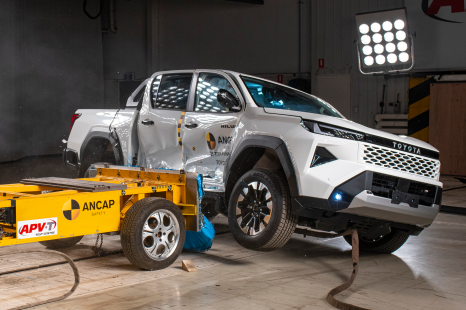

William Stopford
13 Days Ago


William Stopford
13 Days Ago